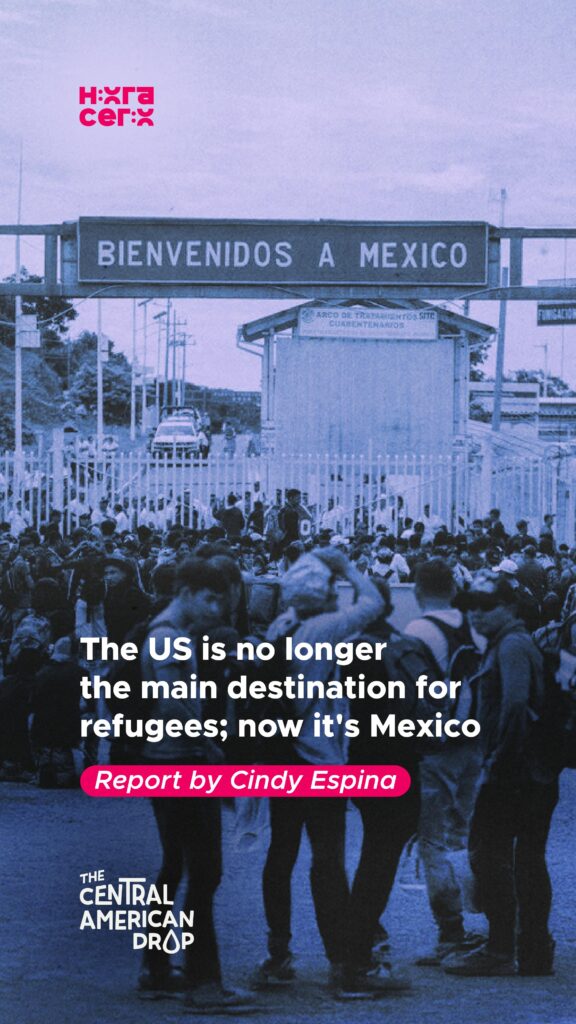
The US is no longer the main destination for refugees; now it’s Mexico
Maldito País
noviembre 5, 2025
The dynamics of migration flows in Mexico have undergone significant changes. It is no longer just a transit or a country to wait in, but has become the primary destination for refugees from countries like Cuba, Honduras, Haiti, and Venezuela, who historically aimed to reach the United States. According to UNHCR, 66% of respondents to its 2025 Protection Monitoring Survey stated that their migration destination is Mexico, compared to 33% who said the United States.
From January to September 2025, UNHCR conducted 1,490 surveys, gathering information from 3,016 people in more than 15 countries as part of its annual protection monitoring. The surveys were carried out in Tapachula and Suchiate in Chiapas; Ciudad Juárez, Chihuahua; Tijuana, Baja California; Reynosa, Tamaulipas; Ecatepec, State of Mexico; Mexico City; Monterrey, Nuevo León; Saltillo and Piedras Negras, Coahuila; and Villahermosa, Tabasco.
These facts are corroborated by the testimonies of refugees organizing caravans from southern to central Mexico. They walk through a territory that, despite being part of the same country, feels like crossing a very long border. This was the case for the Caravan for Freedom that departed from Tapachula on October 2nd, in which the returnees, primarily of Cuban origin, said their destination was no longer the United States, but Mexico City. “Why would I want to go to the United States? They hate us there!” said Esther López Hernández, a 37-year-old Cuban woman who was part of the caravan, to the newspaper, El País Mexico.
Initially, the Caravan consisted of approximately 1,000 people, but as it progressed, it also disintegrated, and on October 21, the 70 people who were continuing their journey to Mexico City stopped and stayed in Oaxaca, the state where they would continue their asylum application process.

Delays in asylum applications
The caravan was organized not only to reach Mexico City, but also as a way to demand their right to be recognized as refugees by the Mexican Commission for Refugee Assistance (COMAR), since that institution has increased the waiting time for people to obtain permanent residency for humanitarian reasons in Mexico. The promise of being assisted by COMAR to expedite their protection application process was the main reason the caravan disbanded, as authorities from Mexico’s National Migration Institute (INM) made them this promise in every city they passed through.
This situation is also reflected in UNHCR’s monitoring surveys, with 73% reporting that they have no immigration or asylum documents. Given this lack of protection, the UN agency asserts that the risks of human rights violations against migrants and refugees within Mexican territory are increasing.
Regarding this situation, Doctors Without Borders (MSF) reported in its report entitled “REJECTED: The devastating human impact of migration policy changes in the United States, Mexico and Central America, ”The asylum application process in Tapachula, Chiapas, the first Mexican city encountered by migrants and refugees from Central and South America, now takes more than a year to reach the credible fear interview stage. Previously, the entire process took three months.
According to MSF, this delay is due to the reduction in funding faced by COMAR, as its budget was reduced because UNHCR, its main funder, was also affected by the withdrawal of international cooperation by the government of President Donald Trump.
“The process remains slow and bureaucratic; now there is greater demand and reduced human resources. There are only 19 people on the team, and they can only conduct four to five interviews per day per person. With the Haitian population, they only do so on Fridays, when they have translators,” explains Lucía Samayoa, MSF project coordinator in Tapachula, in the report.
In the report on the results of Protection Monitoring, UNHCR indicates that the number of people entering Mexican territory irregularly has decreased “considerably” in 2025, but that those who do enter have a greater need for international protection.
The change in migration patterns
Throughout this year, Hora Cero has documented the reconfiguration of migration patterns from South America to the border between Mexico and the United States. In the Darién gap, this jungle that connects Colombia with Panama, the decrease reached 13 people, from the more than 30,000 registered on that same date the previous year (2024), according to data from the National Migration Service of Panama.
In Mexico, the Migration Policy Unit (UPM) recorded an unprecedented decrease. During 2024, 1,234,698 migrants were registered as undocumented. During the first five months of 2025, the number registered was 113,612.
The United States Border Patrol recorded a decrease starting in February 2025, since from 189,913 arrests at border crossings in February 2024, on the same date of this year, it only made 11,710 arrests, which is equivalent to just 6% of the previous year, that is, a decrease of close to 94%.
In recent months, migration flows have reversed. Human rights offices in Costa Rica, Panama, and Colombia have registered approximately 14,000 migrants who have returned from Mexico to Venezuela.
Currently, and for the first time in a historic reconfiguration of contemporary migration patterns, migrants and refugees have set their sights on Mexico as their destination, while they wait for the United States’ anti-immigrant policies to be modified. Meanwhile, their wait in Mexico seems indefinite; however, they are seeking strategies to continue their journey further north, where, according to migrants and refugees, there is more employment and salaries are better.


